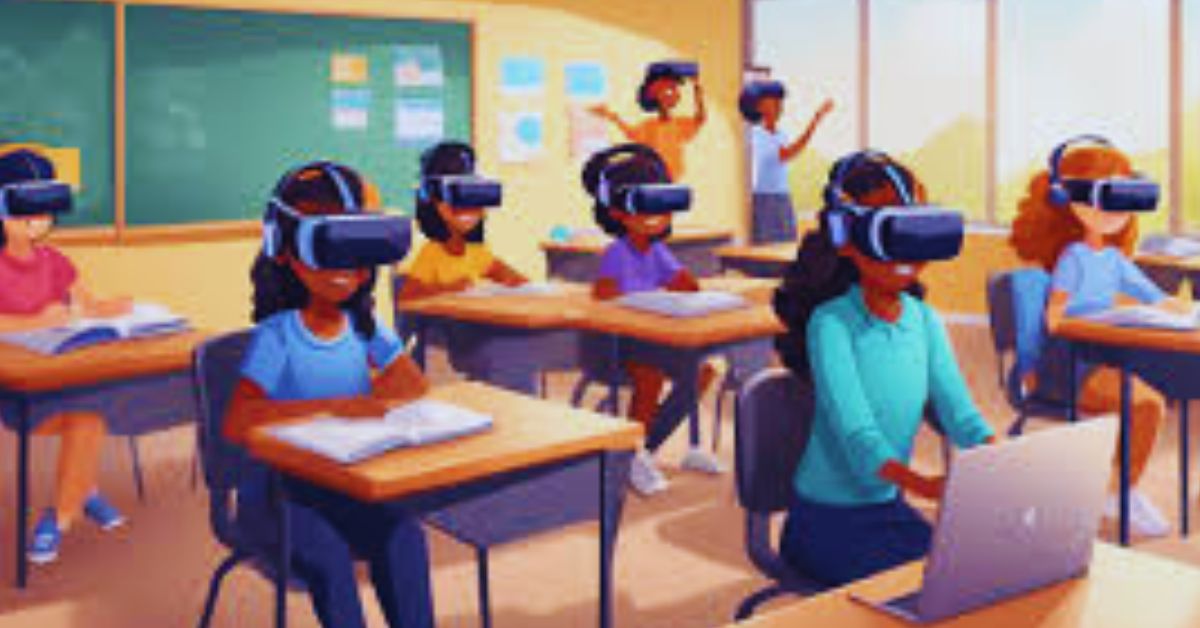Introduction
Virtual Reality (VR) is revolutionizing various industries, and education is no exception. With its ability to create immersive and interactive experiences, VR is transforming traditional learning methods, making education more engaging, effective, and accessible. This technology bridges the gap between theoretical knowledge and practical application, allowing students to explore concepts in a way never seen before.
How Virtual Reality Enhances Learning
VR in education provides a dynamic learning environment that enhances student engagement and comprehension. Here’s how:
- Immersive Learning Experience VR allows students to immerse themselves in different environments, making complex subjects easier to understand. Whether it’s exploring the solar system, diving into historical events, or conducting virtual science experiments, VR makes learning more interactive and memorable.
- Enhanced Retention and Understanding Studies show that students retain more information when they experience it firsthand. VR enables experiential learning, where students can visualize and interact with concepts, leading to better comprehension and recall.
- Safe and Controlled Learning Environment VR provides a risk-free setting for students to practice skills without real-world consequences. Medical students can perform virtual surgeries, engineering students can simulate complex machinery operations, and pilots can train in virtual flight simulators before handling real aircraft.
- Breaking Geographical Barriers With VR, students can take virtual field trips to museums, historical sites, and even outer space without leaving their classrooms. This breaks geographical limitations and provides educational opportunities to students regardless of their location.
Applications of VR in Different Fields of Education
- Medical Education – Medical students can practice surgeries and understand human anatomy through 3D simulations without any risk.
- History and Geography – Students can travel back in time to witness historical events or explore different parts of the world without physical travel.
- STEM Learning – Science, Technology, Engineering, and Mathematics concepts become more accessible through interactive simulations and virtual laboratories.
- Language Learning – VR allows students to practice foreign languages in real-world settings with AI-driven interactions, improving fluency and confidence.
Challenges of Implementing VR in Education
Despite its benefits, VR in education faces several challenges:
- High Cost – VR equipment and software can be expensive, making it difficult for some institutions to adopt.
- Technical Limitations – Not all schools have the infrastructure or expertise to implement VR-based learning.
- Health Concerns – Prolonged use of VR headsets can cause eye strain and motion sickness in some students.
- Content Development – Creating high-quality, educational VR content requires significant investment in time and resources.
The Future of VR in Education
As technology advances, the cost of VR equipment is expected to decrease, making it more accessible to schools worldwide. Developers are continually improving VR content to align with educational curriculums, ensuring its effectiveness. The integration of artificial intelligence with VR will further personalize learning experiences, catering to individual student needs.
Conclusion
Virtual Reality is undeniably transforming the way students learn, making education more interactive, immersive, and effective. Although challenges remain, the potential benefits far outweigh the drawbacks. As educational institutions continue to embrace this technology, the future of learning will be more engaging and innovative than ever before.
